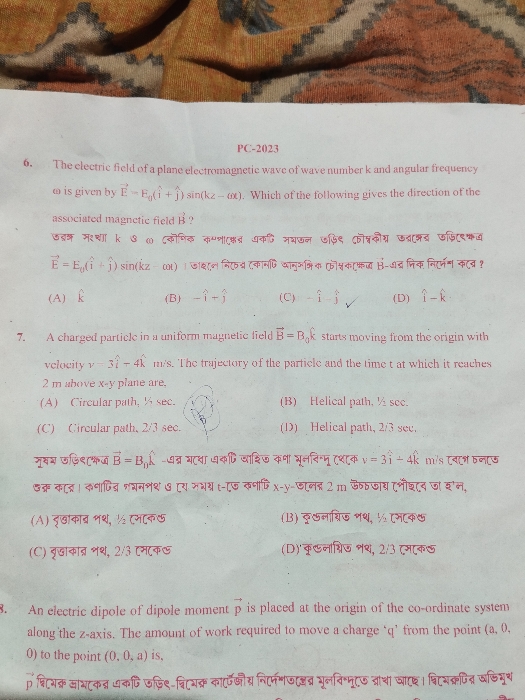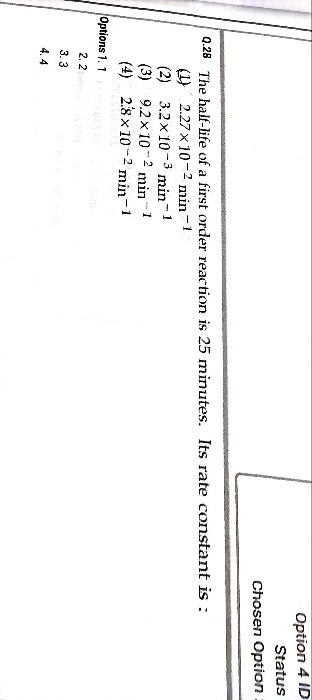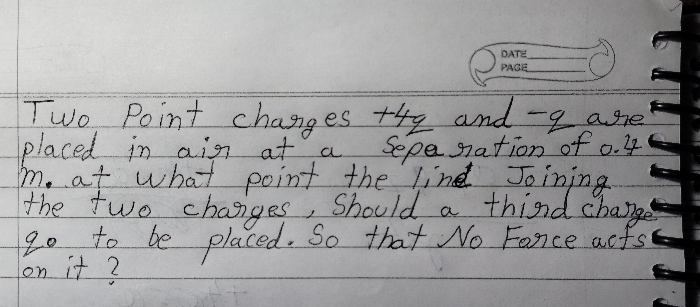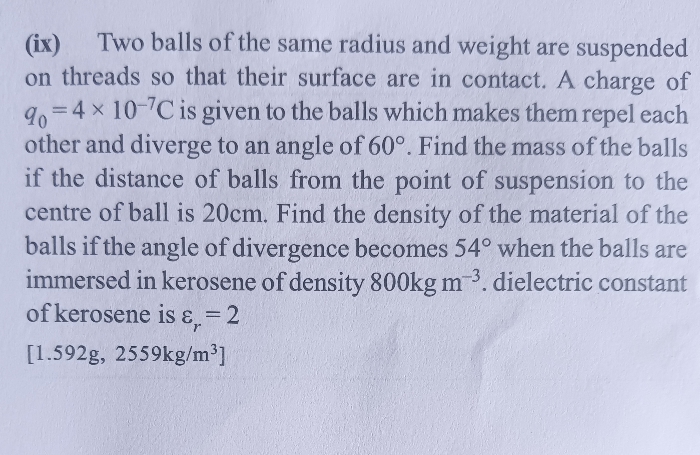CBSE Class 12-science Answered
8 & 9
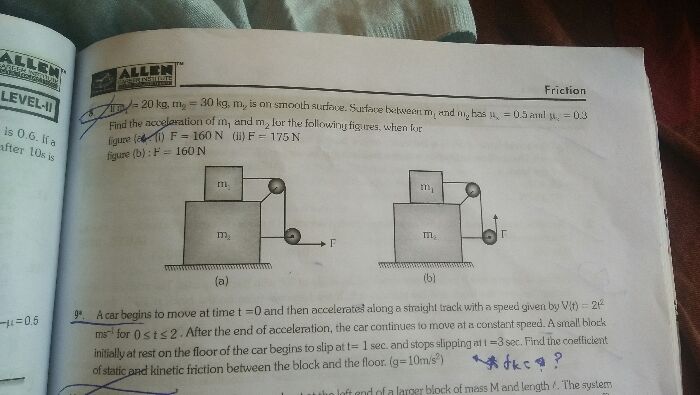
Asked by Harshhacker2580 | 19 Apr, 2020, 07:56: AM
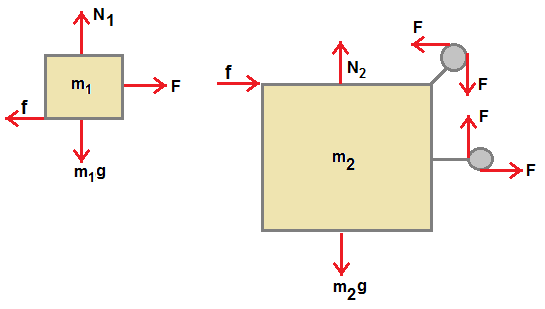
Case (a)
Free body diagram for case(a) is shown above. F is applied force and f is friction force
Let us consider friction is static so that due to applied force whole system moves with acceleration a
When whole system moves together with acceleration a, we have
a = F / ( m1 + m2 ) = ( F / 50 )
By applying Newtons law on block of mass m1 , F - f = m1 a
By applying Newtons law on block of mass m2 , f - F +F = m2 a i.e. f = m2a = 30(F/50) = 0.6F
If friction is static of nature, f ≤ μk N or f ≤ μk m1g or f = 0.6F ≤ 0.5 × 20 × 9.8 .......(1)
From above eqn.(1) , we get Fmax = 163.3 N
In case(a)-(i) , F = 160 N , hence friction is static, system moves with acceleration a = 160/50 = 3.2 m/s2
In case (a)-(ii), F = 175 N > Fmax
Hence friction is kinetic in nature, both mass blocks will move with different acceleration
For block of mass m1 , F - f = 175 - ( 0.3 × 20 × 9.8) = 20 a1 or a1 = 5.81 m/s2
For block of mass m2 , f = m2a2 or (0.3 × 20 × 9.8 ) = 30 a2 or a2 = 1.96 m/s2
-------------------------------------------------------------------------------------
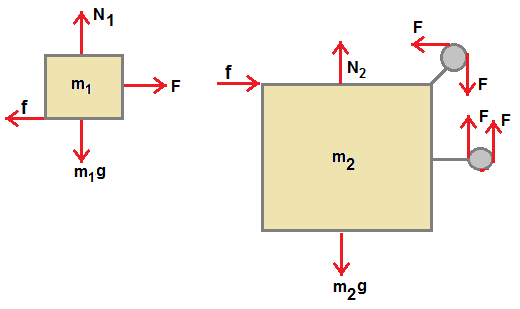
Free body diagrams for case(b) are given above. First we get the maximum force for which whole system moves together.
By applying Newtons second law on mass m1 , we get F - f = m1 a
By applying Newtons second law on mass m2 , we get f - F = m2 a
By solving above equations we get a = 0 and f = F
If there is no sliding , f < 0.5 × 20 × 9.8 or f < 98 N
Maximum force for no sliding is 98 N
Since applied force is 175 N, friction is kinetic in nature and blocks move with different acceleration
for block of mass m1 , acceleration a1 = ( F - f ) / m1 = [ 175 - (0.3×20×9.8) ] / 20 = 5.81 m/s2
for block of mass m2 , acceleration a2 = ( f - F ) / m2 = [ (0.3×20×9.8) -175 ] / 30 = - 3.87 m/s2
-----------------------------------------------------------------------
If multiple questions are asked, only first question will be answered
Answered by Thiyagarajan K | 19 Apr, 2020, 08:18: PM
Concept Videos
CBSE 12-science - Physics
Asked by aishaisha091098 | 19 Apr, 2024, 04:54: PM
CBSE 12-science - Physics
Asked by dasrituparna1999 | 13 Apr, 2024, 06:56: AM
CBSE 12-science - Physics
Asked by dasrituparna1999 | 12 Apr, 2024, 09:26: PM
CBSE 12-science - Physics
Asked by mishrigupta19319 | 08 Apr, 2024, 06:28: PM
CBSE 12-science - Physics
Asked by madhav9119887644 | 07 Apr, 2024, 08:10: PM
CBSE 12-science - Physics
Asked by mishrigupta19319 | 07 Apr, 2024, 11:23: AM
CBSE 12-science - Physics
Asked by adityagalar2007 | 06 Apr, 2024, 01:06: PM
CBSE 12-science - Physics
Asked by amlanmcob | 06 Apr, 2024, 12:27: PM
CBSE 12-science - Physics
Asked by hussain221man | 05 Apr, 2024, 08:44: PM






